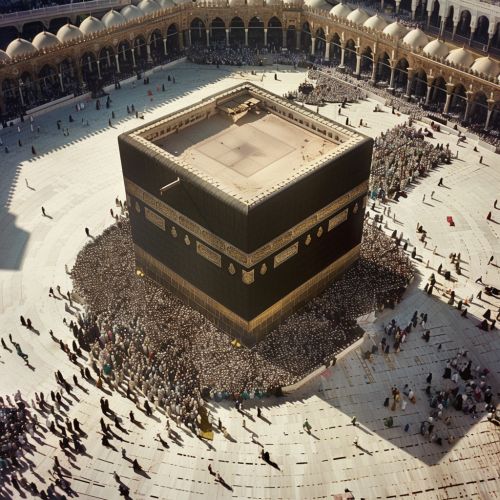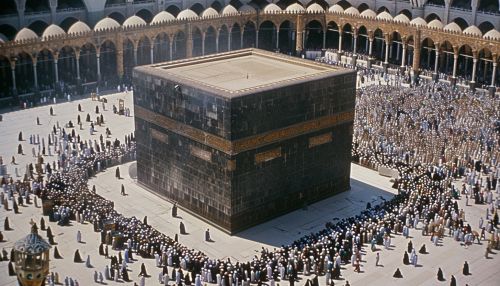Kaaba
Overview
The Kaaba is a cuboid-shaped building located at the center of Islam's most sacred mosque, the Al-Masjid al-Haram, in Mecca, Saudi Arabia. It is considered the most sacred site in Islam, with millions of Muslims around the world facing the Kaaba during their daily prayers.


History
The origins of the Kaaba are uncertain, with various Islamic and pre-Islamic traditions attributing its construction to different figures. According to Islamic tradition, the Kaaba was built by the prophet Abraham and his son Ishmael as a house of monotheistic worship.
Architecture
The Kaaba is a cuboid structure made of granite from the hills surrounding Mecca. The building is approximately 13.1 meters high, with sides measuring 11.03 meters by 12.86 meters. The interior of the Kaaba is hollow and contains nothing but the three pillars supporting the roof and a number of suspended silver and gold lamps.
Religious Significance
The Kaaba holds immense religious significance in Islam. It is considered the "House of God" and is the qibla, or the direction towards which Muslims around the world face for their daily prayers. During the annual Hajj pilgrimage, Muslims are required to walk around the Kaaba seven times in a counterclockwise direction, a ritual known as Tawaf.
